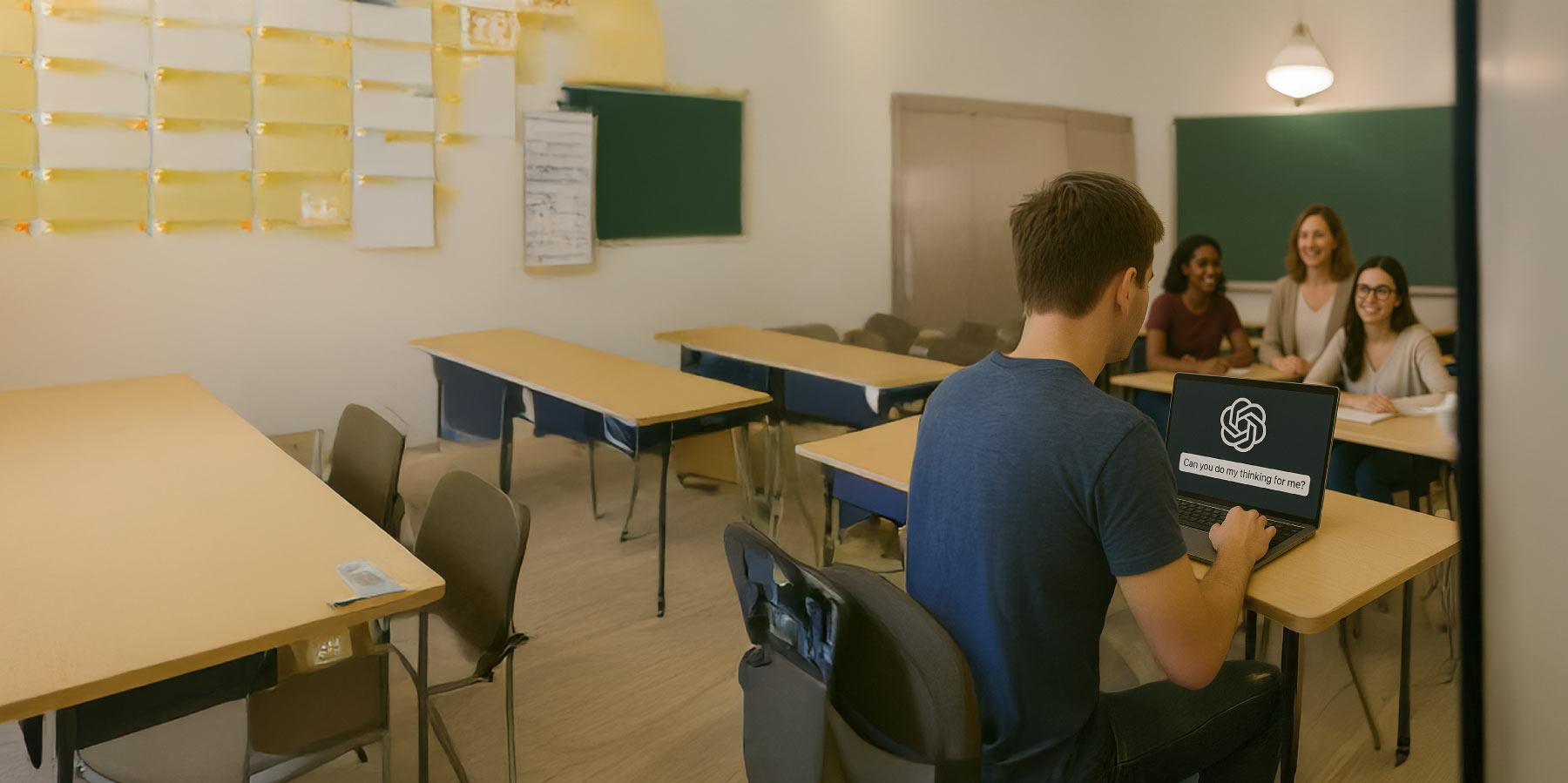More than 170 leaders met at IMD for the “Care to Dare” Discovery Event during which Professor George Kohlrieser explained why caring and daring is so crucial in engaging employees and unleashing their potential. He shared his latest research and emphasized his conclusions using participants’ real-life examples.
Can you afford not to care?
We often hear that there is no place for caring in today’s organizations. But that attitude could undermine the success of your company, or your career as a leader.
Most people leave their jobs because of their relationship with their direct boss. Leaders who do not care or feel compassion for their staff cannot understand why or what losses their employees are grieving. A lack of caring and compassion from their boss ultimately kills their energy, creativity and engagement since they feel insecure and anxious.
Anxiety prevents people from growing and learning because they are too concerned with seeking safety and security, and possibly looking for another job. Meanwhile the company is not harnessing the full potential of those members of staff. Caring about employees is even more important in our fast-moving and changing world, particularly as the so-called Y-generation expect to have more control over their lives.
Leaders are responsible for creating a safe and caring environment that fosters an innovative and creative environment in which employees can flourish. This is secure base leadership (SBL). SBL develops trust and bonding, which helps employees feel secure and frees their minds to explore and innovate so they are more energized and engaged. Indeed, evidence suggests that employee engagement is directly linked to how their line managers treat them rather than to the organization’s overall HR strategy. Yet, according to the Gallop Engagement Index (Gallop, 2008), only a small percentage of employees are fully engaged in their jobs. For example, only 12% of French and German employees are actively engaged. There is clearly room for improvement.
Caring is essential to unleash the latent potential of your neutral or disengaged employees.
The foundations of secure base leadership
According to Kohlrieser, “a secure base is a person, place, goal or object that provides a sense of protection, gives a sense of comfort, and offers a source of energy and inspiration to explore, take risks and seek change.” Examples include family members, teachers, bosses, political figures, a country, the beach, mountains, a park, the birth of a child, receiving a promotion, running a marathon, and much more. A secure base is what helps you move forward and keeps you focused.
Effective leaders inspire by harnessing their employees’ energy and mobilizing it to reach a common vision. Secure base leaders do this by: providing the secure base sense of protection, safety and caring; building trust to develop the potential of their people; and becoming a source of inspiration. When employees feel protected, safe and cared for, they have more energy for exploration and they are more likely to be inspired, take risks and seek challenges. Kohlrieser’s research found that secure base leaders:
- Remain calm, composed and grounded;
- Accept and value the individual;
- See the potential in the individual;
- Use listening, dialogue and inquiry;
- Create bull’s eye transactions by using targeted words and gestures;
- Direct the Mind’s Eye and focus toward the positive;
- Encourage risk and provide opportunities and challenges to stretch;
- Inspire through intrinsic motivation;
- Are believed to be accessible anywhere, anytime.
Participants cited respect, patience, honesty and giving tough feedback as characteristics they particularly liked about their most effective leaders. This contrasted starkly with behaviors such as manipulation, lies, ignoring employees, blaming and not being available, which many participants said they had endured from their least effective bosses.
Perhaps most surprisingly, the research revealed that people were a lot more motivated by intrinsic values such as learning, challenges, individual growth and contributing something. Extrinsic values such as bonuses or promotions inspired them much less.
Of course, caring does not mean “liking everyone,” 24/7 availability or not setting boundaries. Rather, it is about knowing when to say no and delivering painful news in a supportive manner. It need not take a lot of time: Leaders can show they care by using 30-second coaching moments; ensuring employees know that their concerns will be heard; or by making simple promises, such as responding within two days to any concerns sent by e-mail, and then delivering on those promises.
Focusing on the positive: Playing to win
The human brain is wired to watch for danger. However, constantly focusing on potential threats produces a negative state that can cause severe, potentially life-threatening stress. One of the nine characteristics of SBL is to focus the mind’s eye on the positive. SBL is about a “playing to win” mindset, which involves timely risk-taking in order to achieve. Think of this as a two-by-two matrix (see Figure 1). The amount of caring and daring you demonstrate places you in different quadrants of the matrix. The playing to win mindset involves taking appropriate risks to accomplish the desired goals, which requires courage and demonstrating a high level of caring and daring.
Secure base leaders balance caring for their subordinates with encouraging them to dare. Employees are then more likely to release their innovative talent, because when the brain feels safe, it naturally seeks expansion through curiosity, exploration, learning and change.
People often wait until they have nothing to lose before daring to take a risk. But organizations need employees to take risks and unleash their potential when they are at the top of their game. They need people who are engaged and who play to win to ensure maximum performance.
Rewiring your brain for high performance leadership
Our brain is made up of billions of neurons with an overall capacity of up to a trillion neuron connections. Bonding, active curiosity, challenging learning, physical exercise and new experiences (both pleasant and painful) are just some of the ways we can develop new neurons and connections and avoid burning out. Researchers have found that our experiences can even override genetic predisposition. Changing habits requires willpower but a little can go a long way. The mindset is powerful and the brain hardwires anything it can.
Having decided what you want to change, you can create a positive state to make that change happen, then send the right signal to the brain and focus on the outcome. Tap into your secure base for help. Perhaps also consider replacing an old habit with a new one as this is easier than just stopping and you are more likely to be successful. However, just like muscles, willpower needs both exercise and rest, so while it is good to exercise willpower to rewire our brains and change our habits, we should also give our willpower a rest to avoid depleting it.
Implementing strategies to help you and your team play to win
Bonding
People want to feel they belong. Bonding is a critical part of forming relationships. Emotionally connecting and creating synergy generates even more energy. Research shows that most people are irrational and base their decisions on emotions. Organizations take advantage of this by building emotional bonds to promote their brands. People also fear loss — loss is a much more powerful motivator than potential benefits.
Thus, Playing not to Lose motivates 80% of the population. However, people do not naturally resist change; they resist the fear of pain and of the unknown. They resist “being changed.” If you take the time to help them understand the need to change and its potential benefits, most people accept it and that every change creates something positive. Focusing the mind’s eye on the positive helps us take advantage of change.
Why? Because forming bonds inevitably entails a future loss as most bonds do not last forever. Bonding follows a cycle: People form attachments because it is comforting; mutual interest leads to bonding; the bond eventually weakens, leading to loss; finally the loss is grieved. Some people do not bond at all to avoid the future grief caused by loss. However, grieving losses allows us to move on and form new attachments and bonds. Today’s organizations give rise to plenty of losses due to job changes, redundancies, restructuring, promotions, office space reallocations or even negative feedback. Unrealized expectations can also create a sense of loss. Secure base leaders promote bonds, but they also respect the power of loss and allow room for employees to grieve.
Putting the fish on the table: Dealing with conflict
Conflict – or differences between two or more people or groups characterized by tension, emotionality, disagreement and polarization – begins with broken bonding. Most people avoid conflict at all cost and hope that it will just go away. However, “leaving the fish under the table to fester,” is more likely to worsen matters. The best way to get rid of the “bad smell” is to “put the fish on the table,” a metaphor that means openly and honestly raising and discussing the issues that create problems in the organization, or anywhere else for that matter. To “clean the fish” you need to define what you want and how to get there, focusing not so much on the bad fish but on a common goal. You then need to engage in real dialogue.
Dialogue: Seeking a “greater truth”
William Isaacs describes dialogue as “seeking a greater truth by thinking together.” Although some people can talk others to sleep, real dialogue is often lacking in organizations. Indeed, there are many blocks to dialogue, such as passivity, discounting, not answering questions or changing the subject, or giving too many details. Secondary blocks include being over rational or emotional, over generalizing, abstraction, lack of directness or lack of honesty.
A lack of or poor dialogue, is likely to lead to conflict. To find a greater truth, you need to not only ask the right questions and have the courage to dig deeper to understand the heart of the matter by asking open-ended questions, but also define the topic rather than assuming it, focus on what the other person is saying (or trying to say), show caring, and visualize conversations as if you were tossing a ball back and forth to keep the dialogue going. It is worth practicing using constructive dialogue as a tool to seek mutual gain, and by cleaning up dialogue you can drastically cut the time spent in meetings.
Conclusion
Although some stress is inevitable in high-performing teams, there is also generally a caring climate and a good leader behind them creating a happy medium by helping employees to see what is possible and encouraging them to get there whilst showing concern for their wellbeing and developing bonds. Organizations want employees come to work because they are engaged, not just because they have to, and employee engagement comes from the direct boss.
Discovery Events are exclusively available to members of IMD’s Corporate Learning Network. To find out more, go to www.imd.org/cln.












